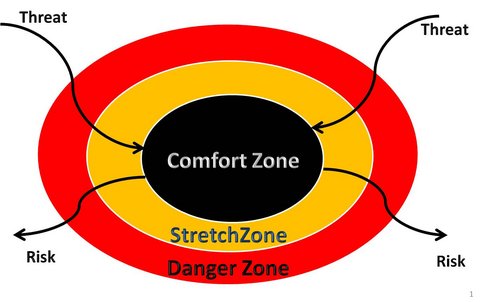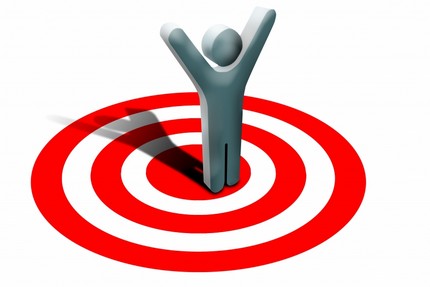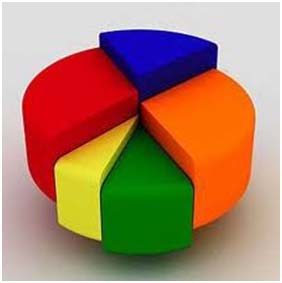How do you engage in conflict, do you run towards it or cower away from it. This video is an opportunity for a simple reflection on your style of behaviour and how that style might interact with other people.
Posted: Personal Training Reflections Conflict and Mediation Coaching
How do you engage in conflict, do you run towards it or cower away from it. This video is an opportunity for a simple reflection on your style of behaviour and how that style might interact with other people.
Posted: Personal Reflections Conflict and Mediation Coaching
In moving from Conflict to Clarity a key skill is our ability to pause. Our ability to recognise that things are heading in a difficult direction and being able to call time out. This video offers some simple thoughts and practices on Pausing.
Posted: Personal Reflections Coaching

Signs of alignment
This blog is about helping us to notice what is going on when we are aligned – or more specifically, when we are not.
Most of us move in and out of alignment all of the time, some of us dwelling more at one end of the spectrum than the other – depending on our psychological make-up and background.
Alignment is the way I think about whether I am ok, whether I am taking the correct action in a situation, whether I am speaking truly. There are three key components to alignment, the thoughts I am having, the emotions I am I noticing and the signals that my body is giving me.
In any circumstance these three aspects will give us information that lets us know how we are doing and also gives us clues about what actions we should take (or not take).
My own experience of alignment is pretty simple;
· If aligned my brain is relatively quiet. Thoughts appear slowly and in response to external stimuli
· My emotional/feeling state is either neutral or positive
· My body feels relatively relaxed- as I scan my body, I feel ‘normal’ – whatever that is for me
Out of alignment
· Thoughts are buzzing around – repeating and come with a sense of distraction and discomfort
· My emotions are negative – often some fear/concern/worry is present
· My body will be doing something that causes discomfort. Typically for me the place I notice this first is in my belly which will feel tight
If any of these latter are running in you, its good news. It means that you have noticed that you are out of alignment and this then gives you a chance to do something about it.
An example.
I was talking recently with a friend about a difficult relationship from my past that still affects me. I said a bunch of words about the situation and paused, in the pause I noticed a tension in my gut, the realisation dawned that I had just ‘told my story’ and not what was actually going on now.
I said to my friend ‘I’ve just told a story and am feeling out of alignment, give me a moment’. I stayed with my discomfort and then some tears appeared and then some new words. As I spoke the new words my body moved back towards a feeling of ease and I learned something new about this old relationship that I had been hiding from myself up until that point.
When our actions take us out of alignment there are indicators that let us know that something is going on. These indicators are sometimes blatant and sometimes subtle. It can be really easy to ignore them especially if paying attention to them might have complicated consequences.
My challenge to you is to pay attention to these indicators, take a little time to figure out what they are telling you and then make a decision about what action to take.
Posted: Coaching

My last post started to explore the idea of being centered and offered a simple breathing technique to help you move in the direction of relaxed attention and focus.
This post will look at the concept of the comfort zone and will offer a second practical approach that can help you become more centered.
The comfort zone can be shown as the diagram top-right.
The comfort zone (CZ) is a name given to an area of psychological safety. Within our CZ we feel safe, outside we feel unsafe. A sense of real or perceived threat keeps us inside this area and the possibility of taking a risk allows us to expand it.
Immediately outside the CZ is a stretch zone – an area that we can see the possibility of entering but that also looks scary. Most types of change, new learning, new jobs or relationships all sit in this area and often contain a mix of excitement and trepidation.
Beyond the stretch zone is the danger zone. This is the area where we feel distinctly unsafe, where it is probably a bad idea (for some of us) to spend time.
As we change and grow over time the different areas shift and change, what at one time seems dangerous, will at another be part of our CZ.
The zones relate to all aspects of our life. As babies we have an innate fascination which leads us to constantly be moving into the stretch zone. As adults we vary, some of us choose to keep stretching or moving toward danger, others of us grow comfortable within what we know. What we think of as risk taking will vary, some people may take up sky diving, others may have a tough conversation with their partner, for some people leaving the house or making social connections may feel like a trip into the danger zone.
If we want to leave or expand our CZ, what is it that enables us to move into our stretch zone?
There are two facets to this, one internal and the other external.
The external is to do with other people and influences. The influences may be books, people we hear about, something that we want that drives us. It is also other people who actively help us, possibly by direct encouragement or by modelling a type of behaviour that enables us to stretch.
The internal is our own sense of resilience, competence or drive. What we know about ourselves and how we act on this knowledge. It is fostered and supported by our ability to be centered.
If we can center, we are able to look at the stretch we wish to take from a responsive place rather than a reactive one.
Being centered will help us pay attention to our emotions without being overwhelmed by them. We will be more accepting of our thoughts and feelings and then able to take greater responsibility for them and the choice we are about to make.
This choice may include not taking the stretch – but if we are centered then it is a choice, a response and not a reactive shying away from something difficult.
In my last post on centering I focussed on breathing – I suggest that you keep using this and I realise that if you are reading this post then you have successfully been breathing since reading the last one. What I mean is choosing to take an occassional deep and mindful breath and now to also pay deeper attention to your body.
How are you sitting or standing right now?
Are you relaxed or tense?
Which parts are relaxed, which are tense?
How is your posture?
Are you slumped in a chair or rigidly holding yourself in position. Are you leaning toward or away from a sore hip, shoulder or other bodily ache?
It will be easier for you to breathe if your posture is comfortable.
What I notice is that when we change our posture both our thinking and our sense of well being changes.
When your spine is straight and head, heart and gut in vertical alignment you may feel more alert and have more mental clarity.
Being centered is not a static state; it is not about sitting in a lotus position on top of a mountain bathed in sunlight. It is a choice at any time, anywhere. I move, bend, slump, switch off and get unfocussed but when I need to support myself, remembering that it is okay to sit up or stand up straighter and take a breath helps me get centered.
Our comfort zone is often a relaxed place to dwell but the following quote also fits:
“if we always do what we have always done, we will always get what we have always got”
If you want something different and that requires a move into your stretch zone, take a breath, adjust your posture, ask for help and take the step.

Being effective and clear may be your usual state but what happens to you in moments of stress, conflict or crisis; can you hold onto the part of yourself that operates well?
Centering is a simple key to effectiveness. It is a way of taking a moment to check in; of managing what is going on and supporting yourself to make clear choices.
Centering affects your body, your mind and your emotions. It is a way of looking after yourself in any situation and importantly, it’s a choice.
No matter what you are doing, if you aren’t centered then you will be operating at less than your capacity.
Being centered is the feeling that you have when you are focussed and relaxed at the same time. There are a range of things that you might do which encourage centering. Some sports help, being in ‘the zone’ whilst running, playing a musical instrument well enough that you make music rather than notes, gardening, cooking, writing. Some activities focus on centering like meditation, yoga and some martial arts.
It is the state where you have a sense of relaxed control, where you feel prepared and are breathing easily. It is a choice and you can bring this state into your moment to moment interactions and activities.
Centering is the ability at any moment to gather yourself together, recognise who is in charge of you (which hopefully is you) and to then make a decision. It is about having a response rather than a reaction.
A reaction is what happens when you receive a stimulus and instantly get triggered into some form of action. We will never stop having reactions, we are designed to have them, what we can do is limit the hold that reactions have over us.
A response is what happens when we start to have a reaction and then notice that we are reacting. We can then engage with our thoughts and feelings and this in turn helps us toward making a choice.
It’s okay to not be centered, but can you choose it when needed? It’s easy when you are relaxed and things are going well, the challenge is to be able to choose it when you are feeling stressed or under pressure.
Whether you are at home looking after young children, winning (or losing) a game of tennis or running a large business, there will be a mixture of times when our sense of being centered slips. Perhaps you need to have a tough conversation, there is a moment of conflict or you are feeling negative stress.
You may be blaming others for your situation, or doing a great job of avoiding something that you know is going to be tricky. You might spot yourself getting very busy doing lots of things except dealing with the key issue. Conversely you may seem entirely unable to focus on anything - -flitting from task to task without focus.
These are all great examples of being reactive – caught by the thoughts and feelings that accompany what we imagine will be a difficult situation.
As a coach I often feel that part of my role is getting people to stop ‘doing’, to take a moment to reflect and think and just ‘be’. Helping them get off the treadmill of reactive behaviour and moving toward making useful responses. As a mediator, one of my tasks is slowly to help people gain a bit of perspective, so that somewhere a choice starts to seem like a possibility.
There are lots of routes toward getting centered and the two exercises that follow are an easy start.
That’s it, you can do it anytime but make it a choice.
Posted: Coaching

This disc represents me (or you).
The blue raised segment is my general sense of who I am in the world and the way that I usually appear and behave; my identity as I and others tend see it.
This segment of this disc has formed due to a range of influences. When I was young, as a consequence of the other people around me I learnt to behave in particular ways. These were usually ways that met the spoken and unspoken requirements of the adults and children around me. An easy example of this is that I grew up in a middle class family in Liverpool, my parents made sure I didn’t speak with a scouse accent because they thought it wasn’t ‘appropriate’, as a consequence I now have a neutral accent.
As I grew I also learnt that I liked people to like me and also to think I was competent and relaxed – so I behaved in ways that drew those responses. I saw friends who wanted people to think they were rebellious or different, so they behaved in a manner that led people to view them that way.
At any given time in our lives we will be being ‘us’ in a way that elicits particular responses from the people around us.
When working, I turn up for meetings clean shaven and reasonably smartly dressed. My preferred state is unshaven and sloppily dressed, but at work I find it easier, usually, to meet other people’s expectations rather than set up an immediate potential barrier.
In the circle above, the blue area represents the ‘me’ that usually appears in the world.
In my case a few of these sectors contain things like, the man who had a long term conflict with his dad, the man who cries easily, the man who paradoxically gets lonely and also doesn’t want to be around other people, the man who knows he is right – and lots more.
These other segments contain bits of me that I don’t always pay a lot of attention to. Some of these bits I know quite well but I am certain there are plenty that I don’t even know exist (the unknown unknowns).
Bits of us that are not normally on display (the other segments) start to appear in our day-to-day behaviour.
Due to our ‘blue’ identity being under pressure our usual identity can’t quite manage the new situation and other bits of us leak from the more hidden aspects of ourselves into our visible behaviour. We usually don’t notice this as it is happening, but fortunately – or not - other people do.
Ever had someone you know come up to you and say ‘what’s going on, are you okay?’ You may say ‘I’m fine’, you might tell them in detail or you may get angry with them and say ‘of course I’m okay, why are you asking’.
The reason they have asked in the first place is because you have been leaking. They have seen a part of you that is often under wraps; you don’t seem like ‘you’.
We all leak, some of us recognise it more than others. Sometimes when others tell us we are leaking we may get upset, or we may be grateful; it may feel like an attack or a gift.
To manage our own conflicts it helps if we get clear about our leakage – the parts of us that want to say hurtful things, attack others, run away or burst into tears. If we know these bits exist then there is less chance that they will unconsciously leak.
Knowing these facets doesn’t mean to say we will be perfectly at ease all of the time but we will be better able to take responsibility for ourselves and the impact we have.
If I am feeling ikky (to use the technical term), I may not know why but I will probably be noticing that something is going on. The way that I can take responsibility is by letting people around me know that I’m not okay. I might say ’I’m feeling ikky and it’s possible that I will be leaking unintentionally’ or just, ‘something’s not okay in me, watch out’.
Naming what is going on makes the leak visible and helps other people to not feel that it is something they have caused. It can also provide an opportunity for me to look at a bit of me that I might sometimes shy away from.
If you are with other people and you notice that they are leaking you can help them to notice it. Do it gently, the idea is to help them not to criticise them - remember you may need help to mop up your leaks one day.